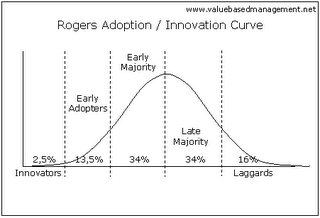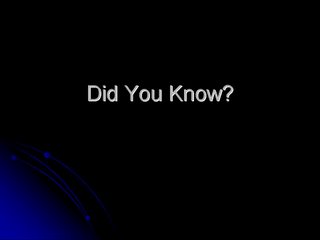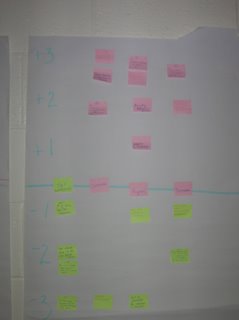What I read: Riehl, C.
Feeling Better: A Comparison of Medical Research and Education Research. Educational Researcher v. 35 no. 5 (June/July 2006) p. 24-9
Background Babble: So - here we are. Originally I drafted a framework for my "recommended reading" through the lens of professional re-commitment with concise arguments for why we are a profession. Then I realized - so what? If we conclude, en mass, that educators are professionals on equal footing with doctors, lawyers, and accountants will things suddenly change? Will students begin to learn more and better? If we decide we're not a profession, but something else (a professional/service hybrid) would the public perception of educators change? So what if we are? So what if we're not? Perhaps one of the struggles about defining teachers as a profession leads to the obligations that are inherent in that word. An obligation for continual self-improvement. Knowing the most current and relevant research in order to ensure you're doing your job as well as everyone else in your field. Attending conferences and workshops. Working until the job is done. This blog is Theresa's and my way of moving toward that goal for ourselves and whoever joins our community. I had no doubt about my first post as the article below arrived in my mailbox days after Theresa and I talked about the blog. I want to recommend it because the author talks about this very type of community as a page we can borrow from the medical field playbook. In ten words or less - educational research is now being held to a new, higher standard - unwittingly set for us by our brethren (sisthern?) in the medical field.
Summary: "Feeling Better: A Comparison of Medical Research and Educational Research" by Carolyn Riehl appears in the June/July 2006 edition of Education Researcher from American Educational Research Association (AERA). I joined AERA for one my doctoral classes last year and renewed my membership when I found I actually enjoyed reading the journals.
There is a feeling - actually, it's been stated explicitly by the federal government - that educational research isn't good enough. That it doesn't meet the standard - when the standard is defined as the medical model. The purpose of Riehl's article is straightforward. ". . . to explore whether the comparison can be a source of solace and inspiration, not just embarrassment." (p. 25) Riehl explains the gold standard for research in medicine as "experimental methods, especially randomized experiments". When we think of medical experiments, we generally think of control groups, random assignments, someone getting a placebo and someone getting the "real" medicine. Though this method is used in medicine - it's not the only research occurring. Medical researchers match the method of research to their research question. Although the double-blind design with random clinical trials is preferred as a means of eliminating bias, it comes "at the end of a laborious, time-consuming, and expensive progression through basic experimental discovery and initial tests of efficacy." (p. 26) Educational researchers, she says, should be allowed the freedom to follow the same path with confidence, and not feel as if their research is failing to measure up.
Riehl cites examples of "fool's gold' in medical research - where one random study revealed one thing and another study, meeting the same high standard, reached different results. Furthermore, the existence of one random, "gold standard" study does not invalidate all of the other research that has occurred. She cites examples of case studies and single subject studies in the medical field that lead to new lines of research (i.e. AIDS research started with a series of case studies). "Calls for more 'gold standard' research seem to suggest that if the results of randomized experiments were available, policymakers and senior-level school officials would know exactly what educational treatments they should require teachers to adopt. But, like doctors, teachers are also knowledge workers." (p. 26) Meaning teachers are expected to make professional judgments based on research and the child in front of them. Additionally, there are multiple philosophical arguments against the logic of randomized experiments. Finally, doctors aren't always willing to trust the results of clinical studies if the results contradict their experiences. What makes the federal government think that teachers are less able to evaluate and think critically about their field?
Riehl raises concern about the significance of research findings. There are two million medical research articles published each year (p. 26). This means even the most well-read doctor cannot be sure if a gold standard study is the final word or just another round of research in an on-going conversation. This begs the question of finality. Which study gets to cry eureka? When a particular instructional strategy works for 100,000 students? 1 million? If it doesn't work for just one student, does that mean the research is invalid? Additionally, who gets to decide which research is definitive? The teacher? The state? The feds? (Would that mean that the prevailing educational research would change every four years?)
Finally, Riehl speaks to the matter of disseminating the results of studies. She shares the model of the
New England Journal of Medicine which is frequently cited in the media as the authoritative voice on medical research. Yet, one media source may select key statements from the study, while another may ignore a study all together. Interestingly, NEJM doesn't offer summaries of their articles, they provide only the full text so a practitioner can draw their own conclusions. This calls to mind the research blurbs that sometimes appear in ASCD or other teacher resources. How many educators read past the summary blurb? Using NEJM as a potential model for the bridge between research science and professional practice, Riehl cites the various types of research in the article. (Including the feature called "Images in Clinical Medicine" that recently had a man with a nail through his skull. He suffered no ill effects in case you were worried. Imagine the fun teachers could have with this picture. "This is Billy, moments before he dropped the hamster into the snake cage.") Riehl recommends the "Case Records" or medical rounds feature as one that educators could benefit from. See, Theresa, we were onto something!
Conclusion: The world of medical research isn't perfect. Educators hold a unique role in the social fabric and educational research should have its own identity and role. Although medical research is "better funded, better organized, and considered by some to more prestigious" (p. 28), education professionals face similar issues as practicing doctors. Small steps like this blog and similar initiatives, could be a start toward establishing a system-wide method of critiquing, disseminating, and performing educational research.
How this article can help an educator: Shaping an argument against adopting a medical model for research or increasing funding for educational research; augmenting a perspective on the disconnect between the research and practitioner




